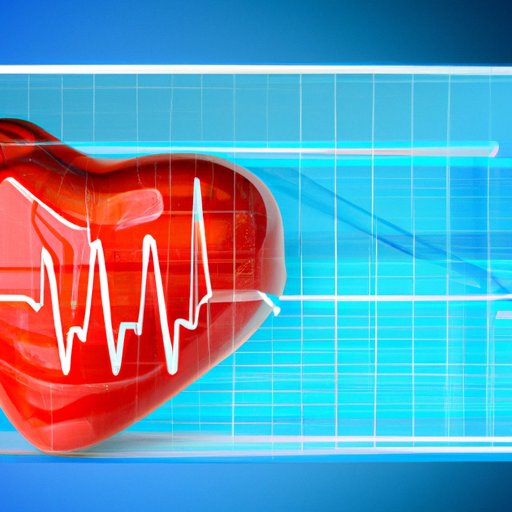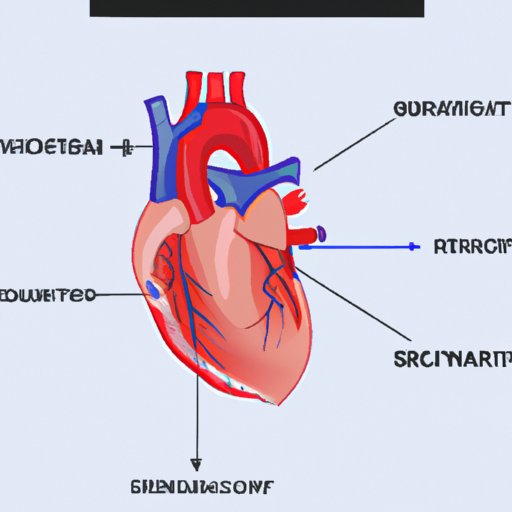Introduction
The heart is a vital organ that plays a crucial role in the functioning of the human body. It is responsible for pumping oxygenated blood throughout the body, helping to maintain life and health. The heart is part of the cardiovascular system, which also includes the lungs and the circulatory system. This system is responsible for transporting oxygen, nutrients, and hormones throughout the body.

Structure and Function of the Heart
The heart is made up of four chambers: the left and right atria, and the left and right ventricles. The left side of the heart pumps oxygenated blood from the lungs throughout the body, while the right side pumps deoxygenated blood back to the lungs. The heart is composed of muscle tissue and is surrounded by a sac called the pericardium. The heart is also connected to other organs, such as the liver and kidneys, via the coronary arteries and veins.
The heart works by contracting and then relaxing in order to pump blood throughout the body. This process is known as the cardiac cycle. During the contraction phase, the heart muscle squeezes and forces out blood from the atria into the ventricles. During the relaxation phase, the heart fills with blood again and the cycle starts over. This process continuously pumps blood throughout the body, thus maintaining life and health.
Blood Flow Through the Heart
Blood is pumped through the heart in a specific pathway. It enters the heart through the superior and inferior vena cava, two large veins located in the upper and lower parts of the chest. From there, it flows into the right atrium, and then into the right ventricle. The right ventricle then pumps the blood through the pulmonary artery to the lungs, where it picks up oxygen and gets rid of carbon dioxide. The oxygenated blood then travels back to the left atrium, and then to the left ventricle. Finally, the left ventricle pumps the oxygenated blood out through the aorta, which branches off into many smaller arteries that carry the oxygenated blood throughout the body.
Types of Heart Disease
Heart disease is a broad term used to describe any type of illness or disorder related to the heart. Common types of heart disease include coronary artery disease, congestive heart failure, arrhythmia, and congenital heart defects. Heart disease can be caused by lifestyle factors such as smoking, poor diet, and lack of exercise, as well as genetic predisposition or environmental factors. Common signs and symptoms of heart disease include chest pain, shortness of breath, fatigue, and irregular heartbeat. Treatment options vary depending on the cause and severity of the condition, but may include medications, surgery, lifestyle changes, or a combination of these.

Latest Advances in Heart Health
In recent years, there have been a number of advances in the field of heart health. New diagnostic tools such as echocardiograms and stress tests allow doctors to more accurately diagnose and monitor heart conditions. Technological advancements, such as implantable defibrillators and pacemakers, have allowed doctors to treat certain heart conditions more effectively. Additionally, research has led to the development of new drugs and surgical techniques that can help prevent or reduce the effects of heart disease. Finally, lifestyle modifications such as quitting smoking, eating a healthy diet, and getting regular exercise can help reduce the risk of developing heart disease.
Conclusion
The heart is a vital organ that plays a crucial role in the functioning of the human body. Understanding how the heart works and the different components of the cardiovascular system is essential to maintaining good heart health. There are a variety of heart diseases that can affect people of all ages, and it is important to recognize the signs and symptoms and seek treatment when needed. Recent advances in heart health have allowed for more accurate diagnosis and treatment of heart conditions, as well as the development of new prevention strategies. By understanding the structure and function of the heart, as well as the latest advances in heart health, we can work to protect our hearts and lead healthier lives.
(Note: Is this article not meeting your expectations? Do you have knowledge or insights to share? Unlock new opportunities and expand your reach by joining our authors team. Click Registration to join us and share your expertise with our readers.)
